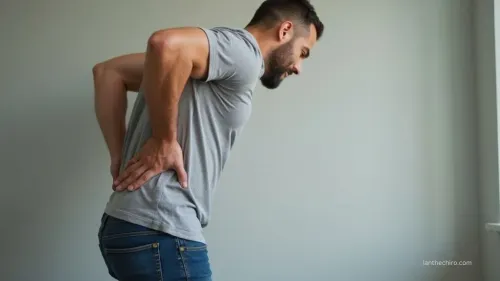Back Straighteners Exposed: Do Posture Correctors Work or Cause Dependency?
Posture is more than just standing tall, it’s the result of muscle balance, body awareness, and daily habits. In the age of desk jobs and screen time, posture correctors and back straighteners have become increasingly popular, promising an easy solution to slouching and back pain.
But how effective are these devices really? Can they help fix your posture, or do they create more problems in the long run?
This article breaks down what posture correctors do, their pros and cons, and how to use them safely, if at all. If you’ve ever considered wearing one or already use one daily, it’s worth understanding the science and strategy behind them.
What Are Back Straighteners and How Do They Function?

Although back straighteners promise better posture, it’s important to understand how they actually work. These devices, often made from lightweight, flexible materials, are designed to provide external support by applying gentle pressure to your shoulders and back.
When you wear one, it physically cues you to align your spine and pull your shoulders back, discouraging slouching. Most models are discreet enough to fit under your clothing, offering continuous reminders throughout the day to maintain proper posture.
You’ll find variations targeting different regions, upper or lower back, with straps or braces tailored for specific alignment. However, while they may help you sit or stand straighter, you shouldn’t assume they fix the root cause of poor posture.
Ultimately, they’re tools for support, not all-encompassing solutions.
Evaluating the Effectiveness of Posture Correctors
While posture correctors promise a quick fix for slouching, evidence shows their effectiveness is limited without additional effort. You might notice temporary posture correction and some relief from discomfort, but the benefits often don’t last unless you actively engage your muscles and adopt better habits.
Scientific studies reveal that posture correctors work best as short-term reminders, not as permanent solutions. Long-term posture correction depends on strengthening your back muscles rather than relying solely on a device.
Effectiveness varies by individual, factors like proper fit, how long you wear it, and whether you pair it with exercise all matter. Experts agree: if you want real improvement, use posture correctors as a training tool alongside an active muscle-strengthening routine, not as a standalone fix.
Potential Risks and Side Effects of Prolonged Use

Even if posture correctors seem like a convenient fix, wearing them for extended periods can backfire. You might think you're supporting your back, but overreliance leads to muscle weakness as your core and postural muscles stop working as hard. This dependency undermines your body's natural ability to maintain good posture without external aid.
Research shows that prolonged use can also cause stiffness, discomfort, and restricted movement, ironically making flexibility and mobility worse. Tight straps or rigid designs may trigger skin irritation, redness, or even numbness from impaired circulation.
If you skip strengthening exercises and just strap one on, you're increasing your risk of injury and may actually worsen postural issues long term. Simply put, posture correctors aren't a substitute for muscle engagement and healthy habits.
Tips for Safe and Effective Use of Back Straighteners
If you want to use a back straightener safely, treat it as a temporary aid rather than a cure-all. Evidence shows posture correctors work best as short-term reminders, not permanent fixes. Limit use to 1-2 hours daily, any longer, and you risk weakening the very muscles the device should help train.
Combine the device with targeted exercises that strengthen your postural muscles, ensuring lasting improvements instead of masking the problem. Always check for proper fit and comfort to prevent skin or circulation issues.
Don’t assume posture correctors work in isolation; ergonomic adjustments and regular movement matter. Most importantly, consult a healthcare professional to craft a plan that strengthens muscles and minimizes device dependency.
Don’t let convenience sabotage your long-term health.
Alternative Strategies for Long-Term Posture Improvement

Although posture correctors offer a quick reminder to sit or stand upright, lasting improvement relies on building your body’s own strength and awareness. Relying solely on devices ignores muscle imbalances, the real culprit behind poor alignment.
For effective posture correction, focus on targeted exercises that strengthen your back, shoulders, and core. These build the support your body needs, reducing the risk of pain and dependency.
Mindfulness and conscious body awareness encourage you to recognize and fix slouching, without external aids. Adjust your workspace ergonomics, think monitor height and adjustable chairs, to support healthy habits.
Consistent stretching and mobility routines reduce tightness and improve flexibility, supporting sustainable change. Consult a physical therapist for personalized strategies, ensuring you address underlying issues for long-term results.
Frequently Asked Questions
Is It Safe to Use a Back Posture Corrector?
You can safely use a back posture corrector for short periods if it fits properly, but don't rely on it long-term. Overuse may weaken your muscles. Always combine it with exercise and seek professional advice first.
Are There Any Side Effects of Posture Correctors?
You might notice skin irritation, discomfort, or even numbness if you wear posture correctors too long. Coincidentally, experts warn you could weaken your muscles or become dependent, so don’t expect these devices to be a magic fix.
Do Back Posture Straighteners Work?
You’ll find back posture straighteners can help you temporarily improve alignment and reduce discomfort. However, you shouldn’t expect lasting results unless you pair them with muscle strengthening exercises. Don’t rely solely on these devices for posture correction.
What Are the Disadvantages of Posture Correctors?
Wearing a posture corrector is like using training wheels forever, you’ll never learn to ride solo. Studies show overuse can weaken back muscles, limit movement, and cause discomfort. You risk dependency instead of building lasting strength.
Conclusion
Before you strap on a back straightener, remember: there’s no silver bullet for perfect posture.
The evidence shows posture correctors might help you become aware of your habits, but relying on them is like using training wheels forever, you’ll never build real strength. Instead, focus on movement, exercise, and mindful habits for lasting results.
Stay skeptical of quick fixes, and invest your efforts where the science points: your own muscles and daily routines.














